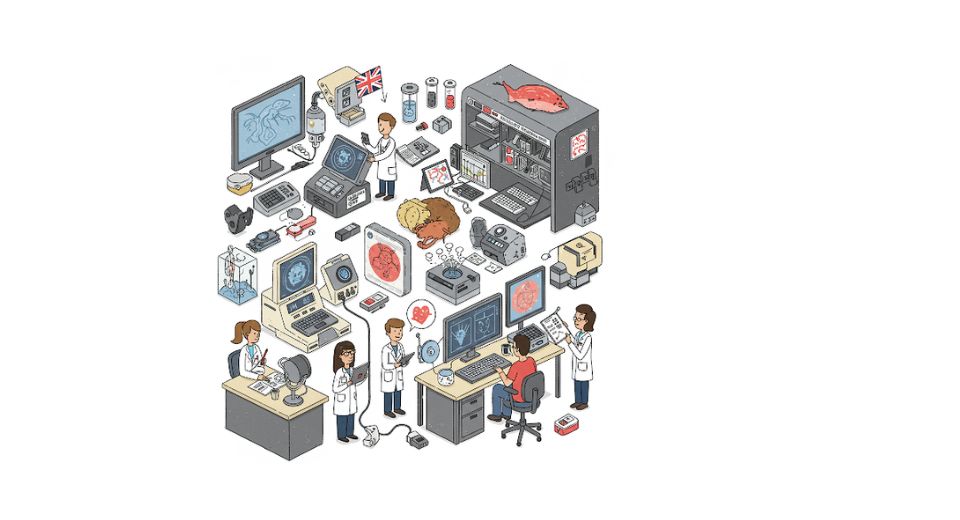
Apr 10, 2025

The Global Preclinical Imaging market analysis recently published by Metastat Insight is a detailed study that opens up completely new perspectives on the market's size, growth pattern, and potential developments. The report is not only built on meaningful industry trend analysis but it also places emphasis on real-time applications and emerging methodologies, thus creating a summary of the current field. This study, in fact, tries to study how modern laboratories and research environments are adjusting to the technological shifts that are affecting preclinical imaging, and also what these shifts mean for pharmaceutical innovation and disease modeling.
Global Preclinical Imaging market is estimated to reach $4,380.84 million in 2025 with a CAGR of 5.1% from 2025 to 2032.
Scientific research is now indeed stretching its frontiers, making imaging technology within its fold an integral part in evaluating and pioneering drug testing at early stages. And as the innovation continues in new dimensions, it will become increasingly important to visualize biological processes by preclinical imaging in small animals before proceeding into human trials. This makes it possible to observe dynamic biological functions without resorting to invasive procedures, thus increasing the reliability and ethical integrity of experimental outcomes. In the past few years, the resolution and sensitivity of instruments used for such purposes have improved substantially and incorporated a multimodal dimension for representing physiological changes in a much clearer and more comprehensive way.
As seen, a focus on translational research has prompted several institutions to shift toward newer imaging technologies, thus bridging the gap between laboratory and clinical findings. These instruments produce vivid images of metabolic and molecular events. The same in vivo approaches to disease progression, gene expression, and drug response have generated greater confidence across the university and private research sectors about decision-making as they go through the drug development cycle. Hence, laboratory architecture is migrating towards rapid imaging workflows, digital management of data, and collaborative models of research.
An increase has also been observed in partnerships between academic research centers and private companies. These partnerships accelerate the pace at which new imaging modalities are adopted. The collaboration can also lead to a healthy competitive environment that further drives technology development. Integration of software and hardware, especially related to artificial intelligence and machine learning, has led to development of more user-interaction-less systems whereas users can gather more detailed insights. These systems are being designed to mold the complex needs into a flexible and consistent result in imaging output for the researchers.
Indeed, even with such exciting progress, there still exists a veil of logistical and economic barriers in the market. Very high equipment costs, specialized personnel to operate the devices, as well as maintenance of imaging facilities, weigh down potential adopters in the industry on these very important factors. However, an ever-increasing demand for high-res non-invasive imaging is still present, especially with advancing numbers of molecules through initial drug discovery phases. Increasing clinical trials and new interest create stronger emphasis on preclinical imaging as a basic foundation in the development of new therapies.
Different sectors of the world have been showing interesting patterns for the development in this space. North America still leads in robust research funding and regulatory infrastructure; other regions are increasingly making their presence felt. Countries in Asia, for example, have invested considerably in biomedical infrastructure and higher education, and they are now on fertile ground for the extension of imaging technologies. The diversification will ensure that more users can be able to access sophisticated imaging tools and make the research environment more connected and productive.
Not leaving aside, the ethical dimensions associated with animal-based research; preclinical imaging has now brought in ways of reducing animal usage without compromising the integrity of research. Imaging technologies also bring the capability for longitudinal studies with the same test subjects, thereby reducing variability and increasing reproducibility. This would not just translate to results being more accurate but is also one that will keep in harmony with changing ethical standards in the science community.
As technology advances, and institutional-end objectives refine, so does this sector moving towards an integrated course where scientific inquiry and application of technology somehow sink into one another. Demand for real primary data in imagery terms appears to be increasing; consequently, showing sustained interest in platforms that promise accuracy in this service provision. Beyond revealing hidden biological mechanisms and invaluable aid in drug development, the field steadily transforms research standards across disciplines.
Based on the overall report submitted by Metastat Insight, the Global Preclinical Imaging market is clearly coming up as one of the most viable areas for development, where innovation meets collaboration and scientific rigor. Indeed, it becomes more complex and promising with time, highlighting the role of imaging in the future of medicine and research.
Drop us an email at:
Call us on:
+1 214 613 5758
+91 73850 57479